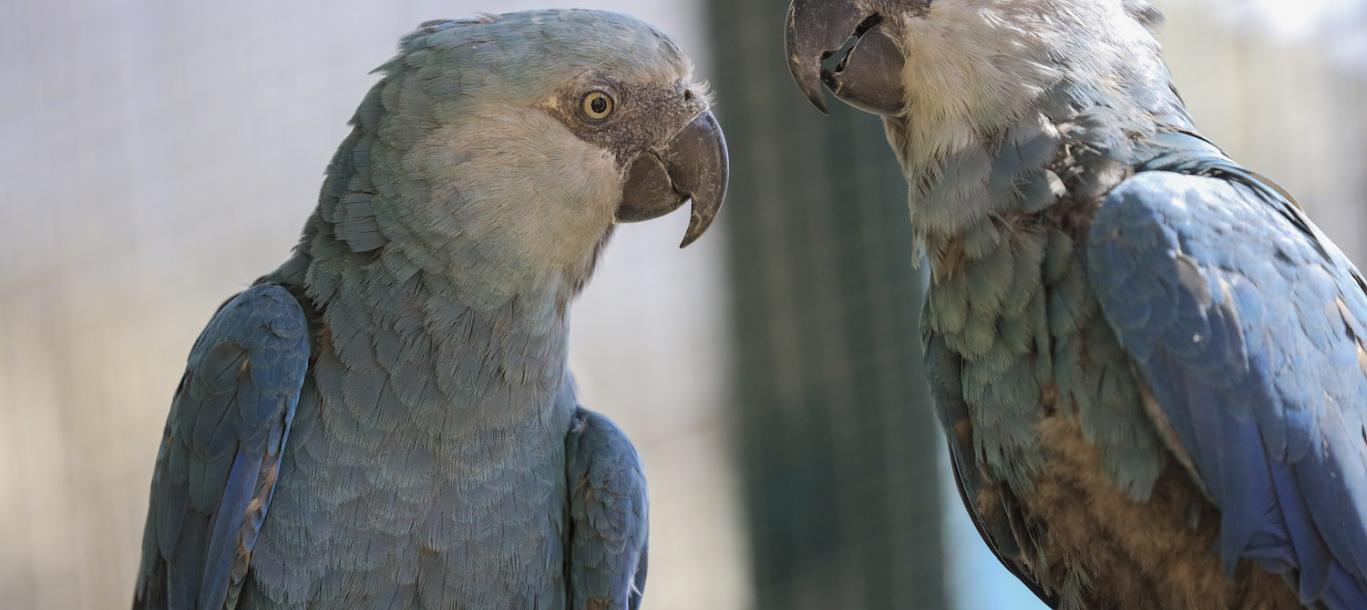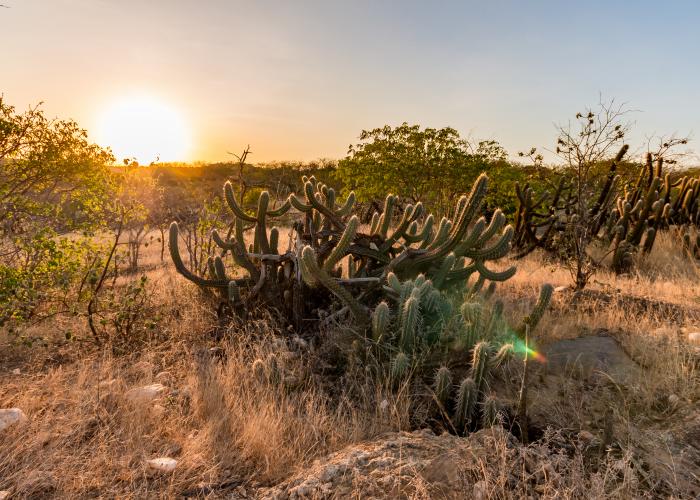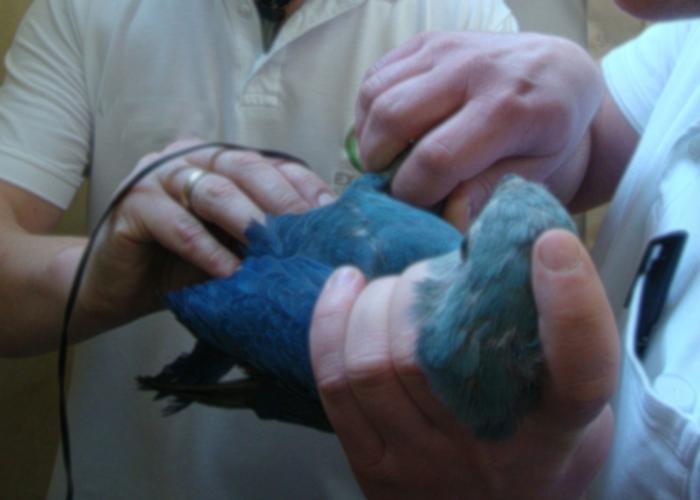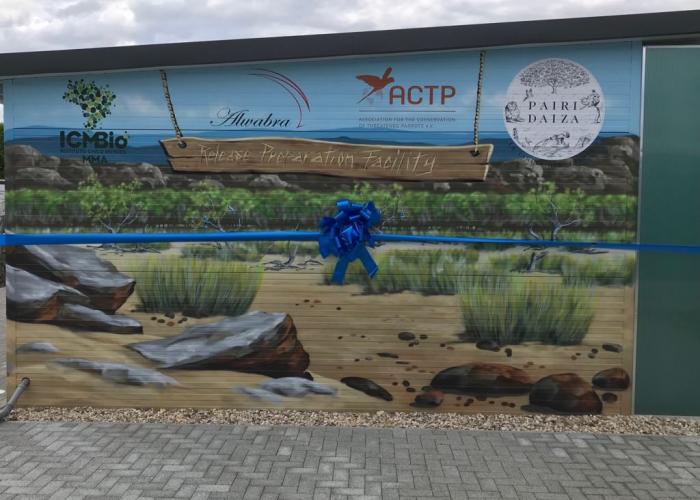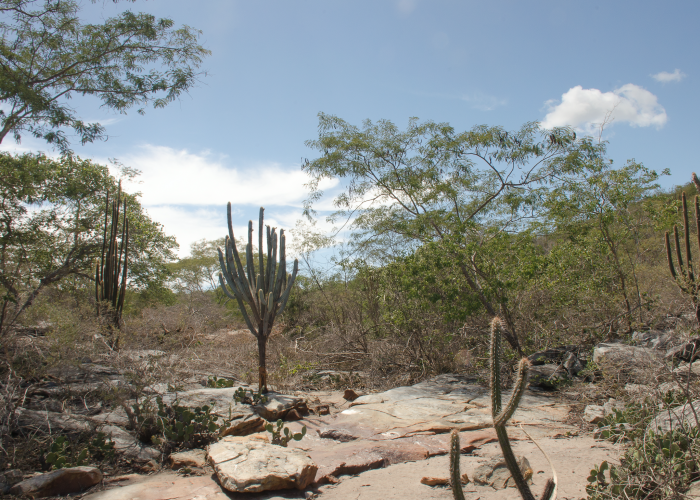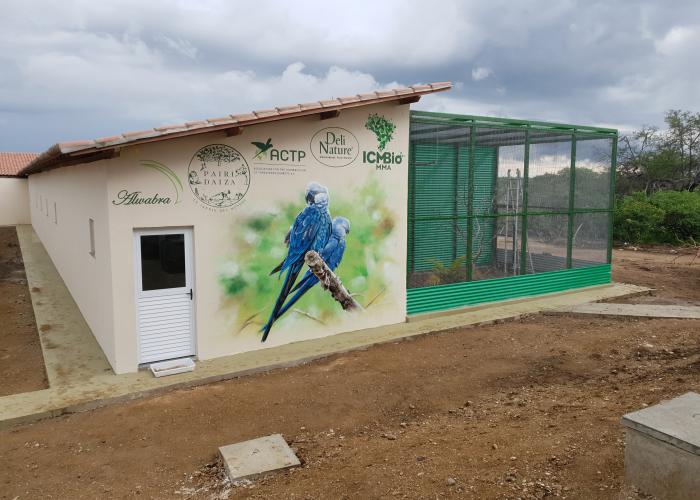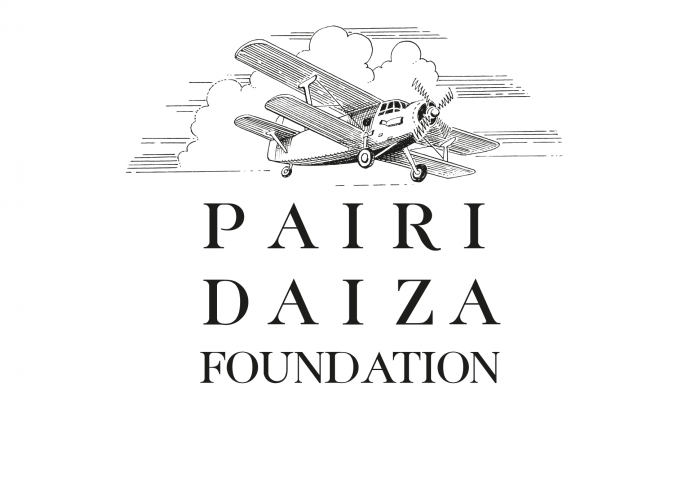The project at a glance
How can we help the Spix’s Macaws to return to their natural habitat? We made an overview with all the information about this project. Discover this overview by clicking on the button below.
The Brazilian Caatinga - its only habitat
The habitat of the Spix’s Macaw is limited to just one single region in the world, the Brazilian Caatinga. This semi-desert biotope is located in the north-east of Brazil, in the state of Bahia (it is therefore not part of the Amazon rainforest). The region is characterised by shrubland, thorny vegetation and flat, dry moors along seasonal waterways. Within this Caatinga region, the original habitat of the Spix's Macaw is located near the small town of Curaça, along the Rio San Francisco river. In this location the dominant tree species is the Caraibeira (Tabebuia caraiba), which provides shelter (holes in the trunks) and food for the Spix’s Macaws.
Extinct in nature
Two main threats have led to the decline of the Spix's Macaw. On the one hand, it has been the victim of poaching and illegal trading. On the other hand, its habitat has been destroyed by human activity, which has transformed a large part of this region along the river into agricultural areas. Grazing by goats and cows has also degraded the vegetation. The last individual known in the wild disappeared in 2000, resulting in the extinction of the species in the wild. At that time there were only 60 Spix’s Macaws in captivity in the world, most of which were kept illegally.
The species saved in extremis
With the species condemned to disappear forever, Sheikh Saoud Bin Mohammed Bin Ali Thani made one “last chance” attempt to save it. This owner of a centre for the preservation of endangered species in Qatar (Al Wabra Wildlife Preservation) gathered together a few dozen Spix’s Macaws that were being kept by private individuals around the world.
Helpful scientific efforts
Such a small population was extremely fragile, particularly as the health of many birds was in a critical state. Veterinary care was of crucial importance, as was management of the birds' genetic pool. Preserving the genetic diversity as much as possible was extremely urgent for the survival of the species. It was possible to meet this challenge thanks to leading-edge scientific management, and in particular the use of artificial insemination, initiated by Tim Bouts. And these efforts have paid off! In 2015, the total population was over 100 individuals.
An increasingly robust population
It was in Berlin, in the ACTP (Association for the Conservation of Threatened Parrots) that efforts were then concentrated to reproduce and breed the Spix’s Macaws. Thanks to a carefully managed breeding programme, the number has reached 180 individuals in 2020. A sufficiently strong population to dare to undertake an unprecedented challenge: the reintroduction of a bird species extinct in the wild into its original habitat!
Three reproduction centres around the world
While the greater part of the population continues to reproduce in the ACTP facilities, two other sites that are geographically far apart are now also involved in breeding Spix’s Macaws in order to strengthen the population as much as possible: a centre located in Brazil (since 2019) as well as the centre located in Pairi Daiza (where breeding will begin in 2020). These three institutions are of course working very closely together.
Habitat, a key to success
If they are to resettle in their original region, the Spix’s Macaws must be able to find food and nesting sites there. To prepare for their return under optimal conditions, the Brazilian authorities have been working for several years to restore this formerly degraded habitat within protected nature reserves. Measures such as installation of fences to protect the vegetation from grazing by goats and cows, management of non-native tree species and the installation of water-slowing devices, have enabled the Caraibeira trees, which are so vital to the Spix’s Macaws, to become re-established.
A gradual return to freedom
So that the young Spix’s Macaws raised in the three breeding centres can be freed under the best conditions, the release will be preceded by a comprehensive “preparation for life in the wild” programme. The birds will stay for several months in a rehabilitation centre in Brazil specially designed for this purpose. In the centre they will be able to develop their muscles for flight in a large aviary 75 m in length. They will also be “coached” by Blue-winged Macaws which are seasoned residents of the Caatinga environment and which can help them to find food and avoid predators.
Local communities involved
The participation of the communities living near Caatinga, and in particular in the town of Curaça, is a fundamental element for the success of the project. The Spix's Macaw is an important symbol of their culture, and its “return home” is awaited with tangible impatience. Everyone, whether young or old, is being made aware of the importance of protecting this extremely rare blue parrot and its environment.
Credits Photo: ACTP
Team work
This project would never have been possible without the huge efforts made over a number of years by the ACTP (Association for the Conservation of Threatened Parrots) (https://www.act-parrots.org) and the ICMBio (Chico Mendes Institute for Biodiversity Conservation) (https://www.icmbio.gov.br). Several partners have also provided invaluable assistance in this project: Deli Nature (https://www.delinature.be), Zoological Society for the Conservation of Species and Populations (ZGAP) (https://www.zgap.de), Al Wabra Wildlife Preservation (AWWP) (http://awwp.alwabra.com/).
Your support makes the difference
Pairi Daiza and Pairi Daiza Foundation have already allocated a budget of €3,000,000 to this project. This amount, to which you are contributing through your valued support, has, firstly, facilitated the construction of the reproduction centre in Pairi Daiza, and, secondly, participation in the construction and operation of the breeding and rehabilitation facilities in Brazil. This property has also been given the name of “Fazenda Pairi Daiza”, which is a way for the ACTP to pay tribute to Pairi Daiza for its contribution to this great project.
